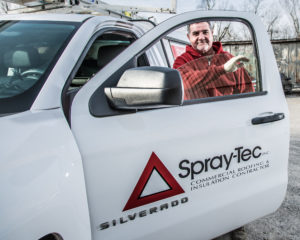Chamber Blog

How To Prepare Your Commercial Building For Spring
May 16, 2018 | Spray-Tec Inc.
It’s spring in Kentucky. We will all get outside and perform those typical spring cleaning “chores” around our homes. But what about our businesses? Commercial buildings also require annual maintenance. This post will offer suggestions to prevent small, inexpensive issues from becoming costly repairs.
First, it is recommended that owners set up a visual inspection of the roof and all components associated with it. This includes drains, flashings, gutters and downspouts, HVAC units, etc., as these are the most common sources of leaks. Cleaning around the drains ensures that water won’t build up and impede proper drainage. Water weight on a roof can stress the structural components of the building and create long term damage. Flashing and seam failures start as small problems, but left undetected, can lead to large expensive repairs as the roof components become saturated and ineffective, structural decking is compromised, and interior finishes, equipment and inventory are damaged.
Metal roofs require the same inspection but with a focus on loose or missing fasteners, which will almost guarantee roof leaks and damage during heavy winds. The inspector should also look for rust and deterioration of metal panels.
Restaurants are especially prone to roof damage from grease (animal fats) and factories suffer from chemicals that escape through stacks or vents. Dirty roofs make inspections difficult, so cleaning the surface beforehand ensures accurate reporting. Pressure washing should be performed by a professional who uses proper cleaning agents and understands the pressure limits of the materials being cleaned.
There are other issues that can appear to be roof problems but are actually masonry or window failures. Scuppers and downspouts should be checked to ensure they are flowing freely and away from the structure. Drywall and ceiling tiles are often damaged by roof and wall leaks, which can lead to mold growth, poor air quality and health issues. If ignored, these easily repaired issues can become considerable problems.
Fixing minor issues before they become major problems is easy to do with a preventative maintenance plan. An experienced commercial roofing contractor could spend 1-2 hours on your roof and around your building twice a year–likely for less than you could do it yourself. They have the materials and knowledge on hand to pinpoint problems quickly and solve them efficiently.
In the interest of safety and efficiency, it is recommended that these inspections are performed by a reputable, certified commercial roofing contractor who can provide proper documentation, i.e. reports of their findings and solid references you can check. Roofing contractors come and go, so dealing with one that has been in business for a while is crucial.